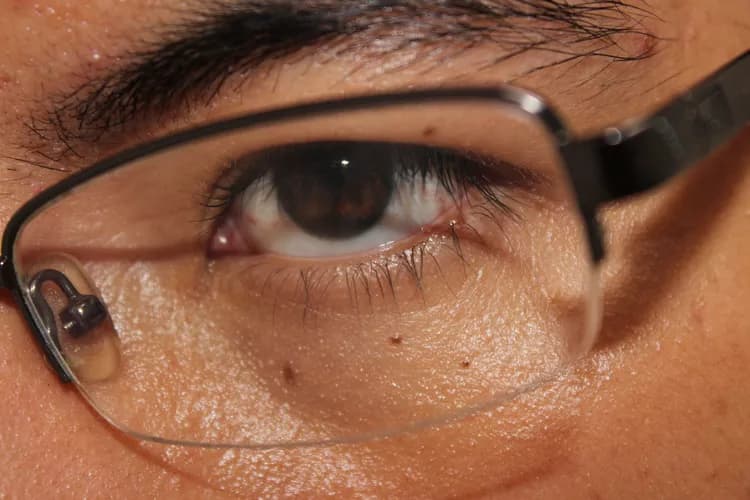What are the other Names for this Condition? (Also known as/Synonyms)
- Diffused Uveitis
- Panuveitis Uveitis
What is Panuveitis? (Definition/Background Information)
- Uveitis is inflammation of the uvea, which is a part of the eye structure. The uvea is a pigmented layer which lies beneath the whitish fibrous layer called sclera. It consists of the iris, ciliary body, and choroid. The uvea encloses, nourishes, and protects the retina
- There are 4 types of uveitis, depending on which part of the uvea is involved:
- Anterior Uveitis
- Intermediate Uveitis
- Posterior Uveitis
- Panuveitis
- Panuveitis affects all regions of the uvea including the iris, ciliary body, and choroid. Along with the entire uvea being involved, the condition can affect the surrounding eye structures such as the lens, optic nerve, vitreous fluid, and retina
- Panuveitis can be caused by both infectious and non-infectious factors and any individual may be affected. However, those that are more predisposed to varying types of infection and immunologic conditions may be at a higher risk for developing Panuveitis
- A healthcare provider may use physical exams and various blood tests to diagnose Panuveitis. Upon diagnosis, treatment options involving steroids or immunomodulators may be used to treat the condition
- Additionally, the healthcare provider will address any underlying conditions that may be contributing to progression of Panuveitis. An immediate medical attention is sought to achieve better outcomes
- The prognosis for Panuveitis depends on each individual's signs and symptoms and is assessed on a case-by-case basis. However, typically the prognosis is guarded due to the entire eye being affected. The condition can lead to permanent blindness if early diagnosis and treatment is not provided
- Complications, such as glaucoma and cataract, can worsen the prognosis. Individuals who wish to avoid Panuveitis should avoid infectious scenarios and treat underlying conditions
Uvea: The uvea is a part of the eye that consists of 3 structures, namely the iris, the ciliary body, and the choroid.
- Iris: It is the colored portion of the eye. The iris surrounds the pupil of the eye
- Ciliary body: It is located between the iris and choroid portion of uvea. Ciliary bodies help in attaching the lens in the eye and also help provide nutrients to the lens. It secretes aqueous humour (transparent watery fluid) and plays an important role in maintaining intraocular pressure
- Choroid: It is a portion of the uvea that is predominantly made up of the blood vessels. Choroid provides nutrients to the retina keeping it healthy
Who gets Panuveitis? (Age and Sex Distribution)
- Panuveitis can present itself at any age, but is more likely to occur between the ages of 20 and 50 years
- Both males and females are affected
- Individuals of different racial and ethnic backgrounds can be affected and no particular preference is noted
What are the Risk Factors for Panuveitis? (Predisposing Factors)
The risk factors for Panuveitis may include a variety of conditions:
- Increased exposure to bacteria, parasites, viruses, or fungi, due to infections such as Lyme disease, tuberculosis, or toxoplasmosis
- Underlying immunologic (non-infectious) conditions such as Behcet’s syndrome, ankylosing spondylitis, sarcoidosis, etc.
- Autoimmune disorders that include psoriasis
- Vogt Koyanagi Harada disease
- Participating in activities that have an increased risk for eye injuries
It is important to note that having a risk factor does not mean that one will get the condition. A risk factor increases one's chances of getting a condition compared to an individual without the risk factors. Some risk factors are more important than others.
Also, not having a risk factor does not mean that an individual will not get the condition. It is always important to discuss the effect of risk factors with your healthcare provider.
What are the Causes of Panuveitis? (Etiology)
Panuveitis is an eye condition that can have either an infectious or a noninfectious origin. In many cases, the cause of the condition remains unknown, termed Idiopathic Panuveitis.
The infectious causes of Panuveitis may include the following:
- Bacteria that may cause tuberculosis, syphilis, Lyme disease and other infections
- Fungi that may cause histoplasmosis
- Viruses causing herpes infections, cytomegalovirus retinitis, and AIDS
- Parasites causing toxoplasmosis
Noninfectious causes of Panuveitis may include the following:
- A variety of immunologic (autoimmune) conditions such as rheumatoid arthritis, systemic lupus erythematosus, psoriasis, etc.
- Inflammatory bowel diseases such as ulcerative colitis
- Certain allergies
- Malignancies, such as caused by large cell lymphomas
- Other conditions include Vogt Koyanagi Harada disease, Behcet’s syndrome, ankylosing spondylitis, etc.
- Injury to the eye resulting in Traumatic Panuveitis
What are the Signs and Symptoms of Panuveitis?
The signs and symptoms of Panuveitis may vary between individuals. It may also be acute or chronic.
- Acute signs and symptoms have a sudden onset, develops rapidly and lasts a period of 3 months
- Chronic signs and symptoms develop slowly over a period of time; it usually persists for over 3 months
Panuveitis signs and symptoms can range from reduced vision to permanent vision loss. It can include the following:
- Eye pain and inflammation
- Small specks, called floaters, that may be seen moving through one's field of vision
- Light-sensitivity or photophobia
- Red eyes
- Blurred vision
- Usually both the eyes are affected
Associated presentations of the underlying disorder, condition, or infection causing Panuveitis may also be observed.
How is Panuveitis Diagnosed?
Determining if an underlying infectious or immunological condition is causing Panuveitis is crucial in its diagnosis. A healthcare professional may diagnose the condition using the following tests and procedures:
- Physical examination and analysis of previous medical history
- Eye examination by an eye specialist
- Fundoscopic (ophthalmoscopic) examination by an eye specialist, who examines the back part of the eye (or the fundus)
- Visual acuity test using a special and standardized test chart (Snellen chart)
- Slit-lamp examination: Examination of the eye structure using a special instrument called a slit-lamp. In this procedure, the pupils are dilated and the internal eye structure is examined
- Tonometry: Measurement of intraocular pressure or eye fluid pressure, especially to detect conditions such as glaucoma
- Fundus fluorescein angiography (FFA): In this technique, the eye blood vessels are examined using a fluorescein dye
- Indocyanine green (ICG) angiography: It is used to examine the blood vessels of the choroid using a dye, called indocyanine green, particularly to study the choroid
- B-scan ultrasonography: Special ultrasound scan of the eye through a non-invasive diagnostic tool, to assess health of the eye structures
- Electroretinogram (ERG): It is a technique to measure electrical activities in the retinal cells
- Optical coherence tomography (OCT) of eye: It is an ocular imaging technique to visualize the eye structure
- Blood tests:
- To check for the presence of antibodies in blood
- Blood culture for infections
- Complete blood count (CBC) with differential
- Erythrocyte sedimentation rate (ESR)
- Tests to determine any underlying condition causing Panuveitis
If individuals have other signs and symptoms, then the following tests may be performed:
- Chest X-rays
- Neuroimaging studies including MRI scan of brain
- Lumbar puncture: In this procedure, the cerebrospinal fluid is collected and analyzed
Note: In some cases, the individuals may not have any significant signs and symptoms, and it may be diagnosed during a routine eye exam.
Many clinical conditions may have similar signs and symptoms. Your healthcare provider may perform additional tests to rule out other clinical conditions to arrive at a definitive diagnosis.
What are the possible Complications of Panuveitis?
The complications of Panuveitis may include:
- Glaucoma: A condition that can cause blindness due to higher intraocular pressure
- Cataracts: When the lens of the eye becomes clouded and cause vision loss
- Retinal detachment: An eye condition wherein the retina gets separated from the eye structures that holds the retinal layers together
- Vision loss: The condition can lead to permanent blindness, if it is left untreated
- Kidney damage, high blood sugar, and high blood pressure, due to steroid treatment
- Recurrent Uveitis: The condition may recur if the underlying cause is not identified and treated appropriately
How is Panuveitis Treated?
Early diagnosis and treatment of Panuveitis is very crucial in preventing complications that may result in irreversible damage to the eye. In general, the management would involve decreasing eye pain and inflammation, addressing other associated symptoms, and stopping progression or deterioration of eye tissue damage, with the goal of preserving vision.
Depending on the cause of Panuveitis, the treatment can be short-term or long-term. With appropriate treatment, the chance of recurrence also decreases.
The treatment of Panuveitis may include the following measures:
- Eye drops and oral medications (including pain medications)
- Oral corticosteroids are generally effective and may be given to control inflammation. Steroids may also be administered intravenously depending on the underlying cause
- Dark glasses may be prescribed for light-sensitivity
- Addressing underlying conditions that may be contributing to progression of the disease, which may be infections, malignancies, autoimmune disorders, or other conditions, is often very important and forms an inherent part of the treatment plan
- If the underlying cause is unknown, then decreasing inflammation is the main step towards treating Panuveitis
- Administration of immunomodulators, which are medications to control dysfunctional immune system
- In case of chronic uveitis that fails to get better with medication, surgery to treat the condition may be considered
It is important to note that steroids may not be used for all causes of Panuveitis, since it can worsen the condition. A healthcare provider will provide the best treatment options based upon each individual’s specific circumstances.
How can Panuveitis be Prevented?
It may be difficult to prevent Panuveitis, but the risk for the condition may be lowered through the following measures:
- Avoiding or minimizing contact with individuals who have infections
- Wearing protective gear (such as industrial goggles or protective glasses) during activities that have an increased risk for eye trauma
- Educating the individual and family members about the underlying cause and preventing the development of any modifiable risk factors associated with the underlying condition (where possible)
- Treating any underlying infections and immunologic conditions, as early as possible
- Maintaining long-term follow-up to watch out for any recurrences
What is the Prognosis of Panuveitis? (Outcomes/Resolutions)
- The prognosis of Panuveitis is generally guarded, because the condition involves the entire uvea and other eye structures. The condition can result in permanent blindness
- However, the prognosis also depends on the following set of factors:
- Severity of signs and symptoms
- Underlying cause of Panuveitis
- Overall health of the individual
- Response to treatment
- Individuals, who do not have severe signs and symptoms, lack complications, and generally respond well to treatment, have a better prognosis. In such cases, the chance for vision loss is low
- Individuals with complications, or those who do not avail adequate treatment, may have a poorer prognosis
Additional and Relevant Useful Information for Panuveitis:
- Vogt Koyanagi Harada disease is a disorder affecting multiple body systems. It is the most common cause of uveitis in India (among the Asian population)
Please visit our Eye & Vision Health Center for more physician-approved health information:
Related Articles
Test Your Knowledge
Asked by users
Related Centers
Related Specialties
Related Physicians
Related Procedures
Related Resources
Join DoveHubs
and connect with fellow professionals



0 Comments
Please log in to post a comment.